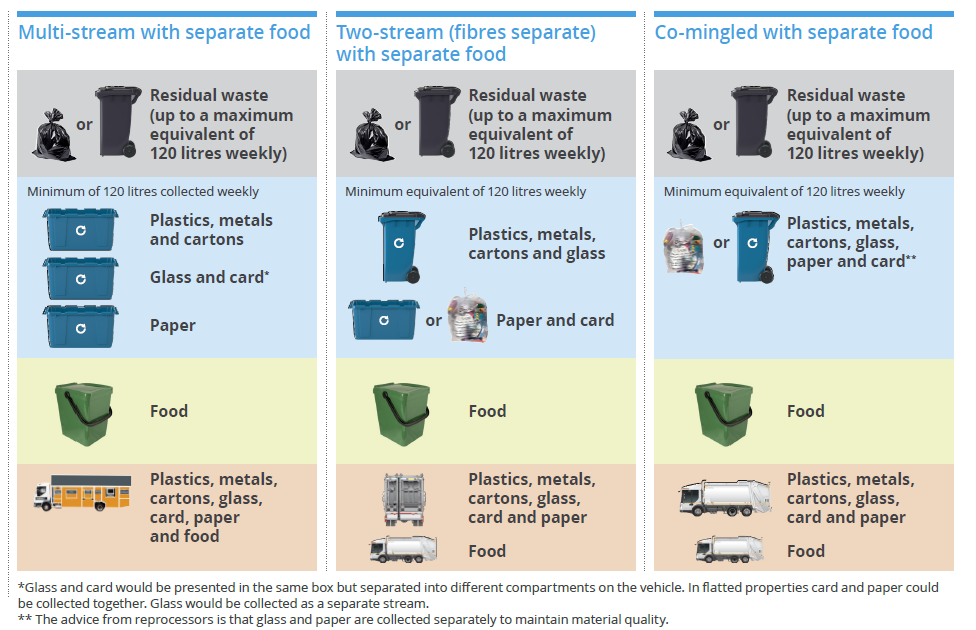Collection System Design
Behaviour
The size of the bin given to householders for Residual Waste and the frequency with which it is emptied can vary according to the behavioural change being targeted by the relevant Waste Collection Authority. By constraining the capacity for Residual Waste collection the more the resident is 'pushed' into increasing the items for recycling. This has broadly been seen as a change from weekly to fortnightly collection and with some movement towards three weekly collection and limited trials of four weekly collection, all of which does not require the replacement of larger bins with smaller bins.
So a Waste Collection Authority may choose to issue a smaller bin to residents restrict Residual Waste when it is time to replace the bin (for example changing a 240 litre bin for a 120 litre bin) when a new collection system is developed, or it may simply continue to supply the same bin that is collected less frequently (for example a 240 litre bin is emptied fortnightly giving a weekly capacity of 120 litres for Residual Waste). The other option available to the Waste Collection Authority is to issue its residents with both a smaller bin that is also collected less frequently.
Whatever the size of the bin chosen by the Waste Collection Authority for Residual Waste it must do so in tandem with more frequent collection of Food Waste and Dry Recyclables to compensate for the reduced capacity.
Charging for Service
The collection of waste and recyclables from residents is a legal requirement under the Environmental Protection Act 1990. Local Authorities therefore cannot charge their residents for the use of this service provided the waste and recyclables fit within the containers provided by their Waste Collection Authority and/or weigh less than 25kg.
There are a couple of exceptions to this arrangement which are detailed within the Controlled Waste (England and Wales) Regulations 2012. These Regulations stipulate when a Waste Collection Authority is able to charge its residents for the collection and/or disposal of household waste. These exceptions are:
- any item of waste which exceeds 25kg in weight (often referred to as a 'Bulky Waste Collection').
- any item which does not fit into the container provided by the Waste Collection Authority
- the collection of clinical waste; and
- the collection of Green Waste/Garden Waste
This latter point has led to two types of arrangements being implemented across the country for the collection of Green Waste
- Free Collection or Green Not Charged - Most authorities initially did not charge their residents for the collection of their Green Waste and those that continue to provide the service with no charge/fee, do so either because of a political reluctance to charge and/or a perception that a charge would lead to a drop in recycling figures or a political desire to retain their position as a 'high achieving recycling authority'.
- Charged Collection or Green Charged - Many authorities have moved to a charged system, mainly driven by a desire to recover the cost of collection from those that use it the most, but also due to the perception that free collection leads to an increase in collected waste and a reduction in, for example, home composting.
In addition to Green Waste collected by the Waste Collection Authority, Green Waste is also handled by the Waste Disposal Authority at a Household Waste Recycling Centre where the public bring their Garden Waste/Green Waste to be bulked up and disposed of in a similar way to kerbside collected Green Waste through the use of Windrow Composting or In-vessel Composting.
Service Structure/Combination
WRAP in their report on greater consistency[1] proposed the following default approaches to Collection System Design, although the number of systems presently in use show little sign of aligininig with these default options:

